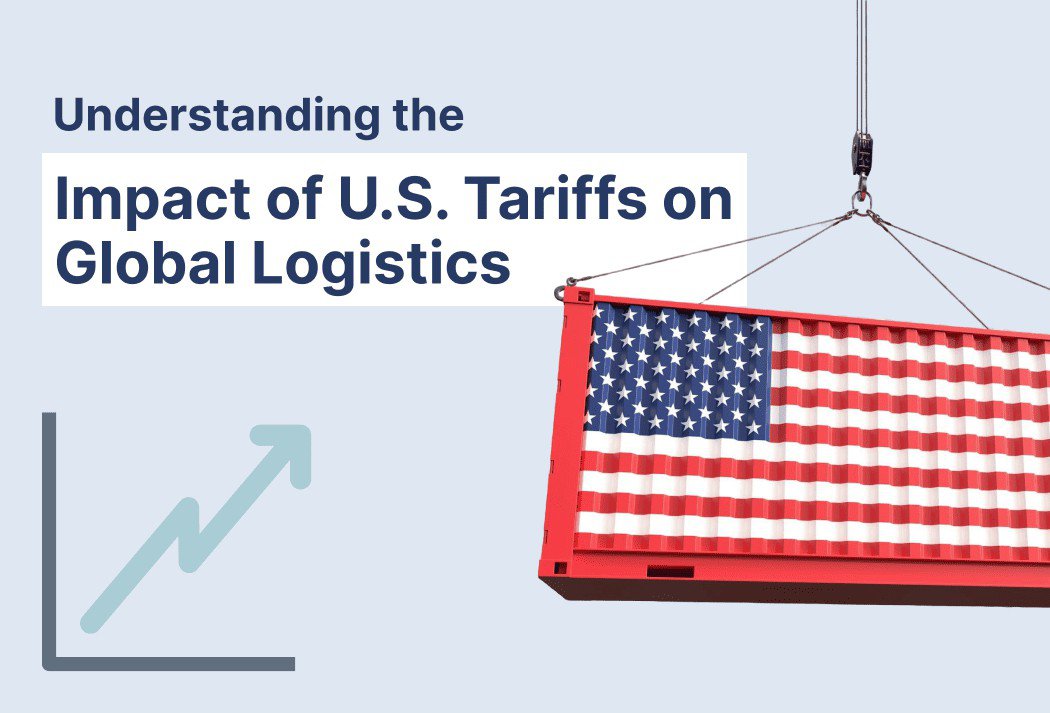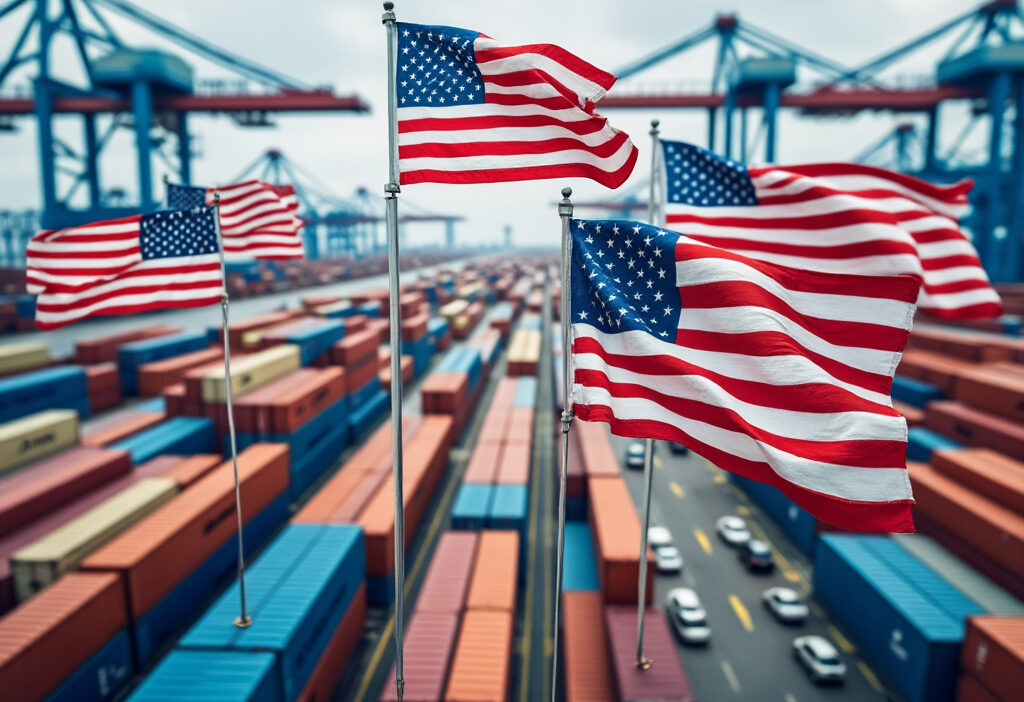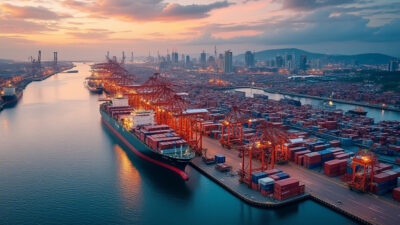Understanding the New Tariffs in the USA
The United States has recently implemented a series of new tariffs, marking a significant shift in its trade policy. These measures, aimed at protecting domestic industries and addressing trade imbalances, have sparked debates and reactions worldwide. This article delves into the specifics of these tariffs, their implications for the global economy, and what they mean for consumers and businesses alike.
The Genesis of Recent Tariff Policies
The recent wave of tariffs introduced by the USA reflects a strategic shift in trade policy, driven by both economic and geopolitical considerations. These measures stem from a desire to protect domestic industries, counter unfair trade practices, and reduce reliance on foreign supply chains—particularly in critical sectors like semiconductors, electric vehicles, and clean energy. The Biden administration has framed these tariffs as a response to decades of offshoring and trade imbalances, echoing themes from previous administrations but with a sharper focus on technological competition with China.
Historically, US tariffs have fluctuated between protectionism and free trade, but the current policies are notable for their targeted approach. Unlike broad tariffs of the past, these are designed to shield emerging industries vital to national security and economic leadership. For example, tariffs on Chinese EVs and solar panels aim to nurture domestic production while addressing concerns over dumping and intellectual property theft. This aligns with broader goals like the CHIPS Act and Inflation Reduction Act, which prioritize self-sufficiency in tech and green energy.
The political backdrop is equally significant, with bipartisan support for tough-on-China measures, reflecting shifting public sentiment. These tariffs aren’t just economic tools—they’re part of a larger strategy to redefine America’s role in global trade.
Key Tariffs Introduced
The recent wave of tariffs introduced by the USA targets a range of goods, with a focus on strategic sectors like steel, aluminum, and clean energy components. Steel imports now face a 25% tariff, while aluminum imports are subject to a 10% duty, reinstating measures initially imposed in 2018 but later adjusted. These rates mark a return to stricter protectionist policies, diverging from temporary exemptions granted to certain trading partners.
Additionally, the Biden administration has introduced new tariffs on electric vehicle (EV) batteries and solar panels, with rates reaching 25% for Chinese-made lithium-ion batteries and 50% for solar cells. These measures aim to bolster domestic clean energy production while reducing reliance on foreign supply chains.
The tech sector is also impacted, with semiconductors and critical minerals facing 15-25% tariffs, particularly targeting imports from China. This shift reflects broader efforts to secure supply chains for advanced manufacturing.
Key changes from previous policies include stricter enforcement and fewer exemptions, signaling a more aggressive stance on trade. Industries like automotive, renewable energy, and construction are among the most affected, facing higher input costs but also potential long-term benefits from reshoring initiatives. These tariffs align with the administration’s goals of economic security and industrial revitalization, setting the stage for deeper domestic impacts.
Impact on Domestic Industries
The new tariffs in the USA have created a mixed impact on domestic industries, with some sectors benefiting from protectionist measures while others face rising costs. Steel and aluminum producers are among the biggest winners, as tariffs on imports have bolstered demand for domestically produced materials. Companies like Nucor and U.S. Steel have seen increased production and job growth, as higher import costs make local alternatives more competitive. Similarly, the solar panel manufacturing sector has gained from tariffs on Chinese imports, encouraging domestic investment in renewable energy infrastructure.
However, industries reliant on imported materials are struggling. Automakers face higher expenses due to tariffs on steel and aluminum, squeezing profit margins and potentially leading to price hikes for consumers. The consumer electronics sector is also hit hard, as tariffs on components from China increase production costs, forcing companies to either absorb losses or pass costs to buyers. Small businesses, particularly those in retail, are disproportionately affected, lacking the scale to negotiate better supply chain terms.
While protectionist policies aim to revive certain industries, the broader economic ripple effects—such as inflation and reduced competitiveness—could offset short-term gains. The next chapter will explore how global trading partners are responding to these measures.
Global Reactions and Countermeasures
The imposition of new tariffs by the USA has triggered swift and varied reactions from trading partners worldwide. Countries like China and the European Union have retaliated with their own tariffs on American goods, targeting key exports such as agricultural products, automobiles, and technology. These countermeasures aim to pressure the US into reconsidering its trade policies while protecting their domestic industries from unfair competition. For instance, China’s tariffs on soybeans and pork have directly impacted US farmers, exacerbating tensions in an already strained bilateral relationship.
The risk of escalating trade wars looms large, with economists warning of disrupted global supply chains and reduced economic growth. Smaller economies, reliant on US trade, face disproportionate harm, as they lack the leverage to negotiate favorable terms. Meanwhile, multinational corporations are caught in the crossfire, forced to reassess production and sourcing strategies to mitigate tariff-related costs.
International organizations like the WTO have expressed concerns over the erosion of multilateral trade frameworks, emphasizing the need for dialogue over confrontation. The tariffs have also spurred regional trade alliances, as countries seek alternatives to US markets. These shifts could reshape global trade dynamics, potentially marginalizing the US in long-term economic partnerships. The broader implications for diplomacy and geopolitical stability remain uncertain, as trade disputes increasingly spill over into political arenas.
Effects on Consumers
The new tariffs imposed by the USA are expected to have a direct and measurable impact on consumers, particularly in terms of rising prices and reduced availability of imported goods. Economists warn that tariffs act as a hidden tax, increasing costs for businesses that often pass these expenses onto consumers. For example, tariffs on electronics, apparel, and household goods could lead to price hikes of 5-15%, disproportionately affecting lower-income households. Consumer advocacy groups highlight that these increases will strain budgets, especially for essentials like clothing and appliances.
The availability of certain goods may also decline as importers seek alternatives or reduce inventories due to higher costs. While some argue that tariffs could boost domestic production, economists caution that short-term disruptions will likely outweigh any long-term benefits. A study by the Peterson Institute for International Economics suggests that the average US household could see an annual cost increase of over $1,000 due to these policies.
Additionally, retaliatory tariffs from other countries (as discussed in the previous chapter) may further escalate prices, particularly for agricultural products like soybeans and dairy. This interconnected effect underscores how trade policies reverberate through everyday consumer experiences, compounding the overall cost of living.
Trade Deficits and Tariffs
The new tariffs introduced by the USA are partly aimed at addressing the persistent trade deficit, which has long been a contentious issue in trade policy debates. Proponents argue that tariffs on imports, particularly from major trading partners like China, could reduce the deficit by making foreign goods more expensive and encouraging domestic production. However, economists are divided on whether this approach will yield the desired results.
Historical data suggests that tariffs alone rarely shrink trade deficits significantly. While they may temporarily reduce imports, they often lead to retaliatory measures, disrupting export markets and potentially widening the deficit. For example, the 2018-2019 tariffs on Chinese goods saw a short-term dip in imports but also hurt US agricultural exports due to China’s counter-tariffs. Additionally, domestic producers may struggle to scale up quickly enough to replace imported goods, leading to supply shortages and higher prices—a point highlighted in the previous chapter.
The structural causes of trade deficits, such as exchange rates, savings rates, and global supply chains, are often more influential than tariffs. Without addressing these underlying factors, the new tariffs may only provide a superficial fix. The following chapter will explore how these policies could face legal challenges, further complicating their impact on trade balances.
Legal and WTO Challenges
The new tariffs imposed by the USA have sparked legal challenges and WTO disputes, echoing past trade conflicts. Countries affected by these measures, such as China and the EU, have already signaled their intent to challenge them at the WTO, arguing they violate global trade rules. Past precedents, like the US steel and aluminum tariffs in 2018, resulted in retaliatory measures and WTO rulings against the USA, though enforcement remained contentious due to disputes over national security exemptions.
Legal experts highlight that the current tariffs may face similar hurdles, particularly if they are deemed discriminatory or disproportionate. The WTO’s dispute settlement system, already weakened by US blockades of appellate judge appointments, could struggle to deliver timely resolutions. Meanwhile, affected nations may pursue retaliatory tariffs or seek bilateral negotiations to mitigate impacts.
Domestically, industries harmed by retaliatory measures could also challenge the tariffs in US courts, citing economic harm. However, courts have historically deferred to executive authority on trade policy. The outcome of these disputes will shape not only the legality of the tariffs but also the future credibility of the WTO in mediating trade conflicts. These legal battles could further strain global trade relations, influencing the next phase of US trade policy.
Future of US Trade Policy
The future of US trade policy remains uncertain, but current trends suggest a continued emphasis on protectionist measures, albeit with potential shifts in strategy. Given the legal and WTO challenges outlined earlier, the US may face pressure to recalibrate its approach, balancing domestic industrial goals with international trade obligations. Further tariffs are likely, particularly on sectors like clean energy and semiconductors, where the US aims to reduce reliance on foreign supply chains. However, the administration could also pivot toward negotiated trade agreements, especially with allies, to avoid prolonged disputes and foster collaborative supply chain resilience.
A key factor will be the 2024 election outcome. A second Biden term might maintain the current trajectory, blending tariffs with subsidies (e.g., CHIPS Act). Conversely, a Republican administration could escalate tariffs more aggressively, echoing Trump-era policies but with a sharper focus on China. Policy reversals are possible if WTO rulings against the US accumulate, forcing concessions or alternative measures like quotas.
Technological advancements and climate policies will also shape trade dynamics. For instance, tariffs on green tech imports might clash with decarbonization goals, prompting adjustments. The interplay of geopolitics, economic nationalism, and global trade rules will define the next phase of US trade policy, making it a fluid and contentious arena.
Comparative Analysis with Past Tariff Policies
The current US tariff policies under the Biden administration reflect both continuity and divergence from past approaches. Compared to the aggressive, unilateral tariffs imposed by the Trump administration—such as those on Chinese goods under Section 301—the Biden team has adopted a more strategic, alliance-driven framework. However, key similarities remain, including the use of tariffs as a tool for protecting domestic industries and addressing unfair trade practices.
Differences:
Trump’s policies were characterized by broad, sweeping tariffs, often targeting allies like the EU and Canada alongside adversaries like China. In contrast, Biden’s approach focuses on targeted measures, such as tariffs on clean energy components, while reinforcing partnerships through agreements like the Indo-Pacific Economic Framework.
Similarities:
Both administrations leveraged tariffs to boost domestic manufacturing, though Biden’s policies are more aligned with climate and tech competitiveness goals. Past lessons highlight the risks of retaliatory cycles, as seen in the US-China trade war, which disrupted global supply chains. The current administration appears more cautious, emphasizing diversification over escalation.
Looking ahead, the evolution of tariffs will likely hinge on balancing protectionism with global cooperation—a theme explored in the previous chapter—while businesses must adapt, as discussed in the next section.
Navigating the New Trade Landscape
The new U.S. tariffs introduce both challenges and opportunities for businesses and investors. To navigate this shifting landscape, companies must adopt agile strategies that account for supply chain disruptions, cost fluctuations, and shifting market dynamics. Diversification is key—reducing reliance on single-source suppliers or markets can mitigate risks. Businesses should explore alternative sourcing from countries not heavily impacted by tariffs, such as Vietnam or Mexico, while ensuring compliance with rules of origin.
For investors, sector-specific analysis is critical. Industries like clean energy and semiconductors may benefit from protective tariffs, while consumer goods could face margin pressures. Hedging against currency volatility and locking in long-term supplier contracts can stabilize costs.
Technology plays a pivotal role—leveraging AI-driven logistics platforms can optimize supply chains in real time, while blockchain ensures transparent tariff documentation. Companies should also engage in lobbying and policy advocacy to shape future trade negotiations.
Finally, businesses must stay informed through customs brokerage partnerships and trade policy alerts. Proactive adaptation, rather than reactive measures, will separate resilient enterprises from those left struggling in the new trade era.

Conclusions
The new tariffs in the USA represent a bold move in trade policy with far-reaching consequences. While they aim to protect domestic industries and address trade imbalances, their impact on the global economy, consumers, and international relations remains to be fully seen. As the situation evolves, staying informed and adaptable will be key for all stakeholders involved.



